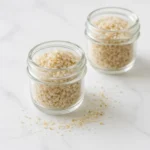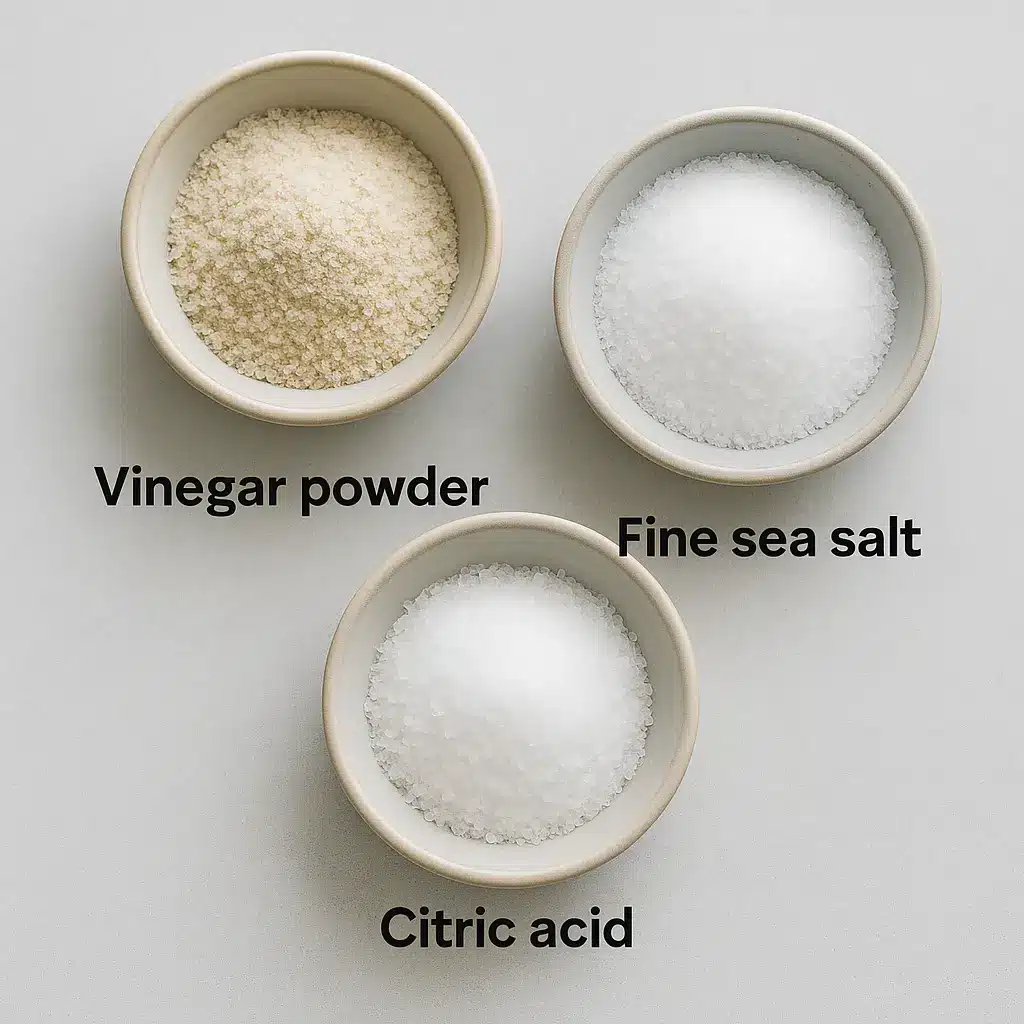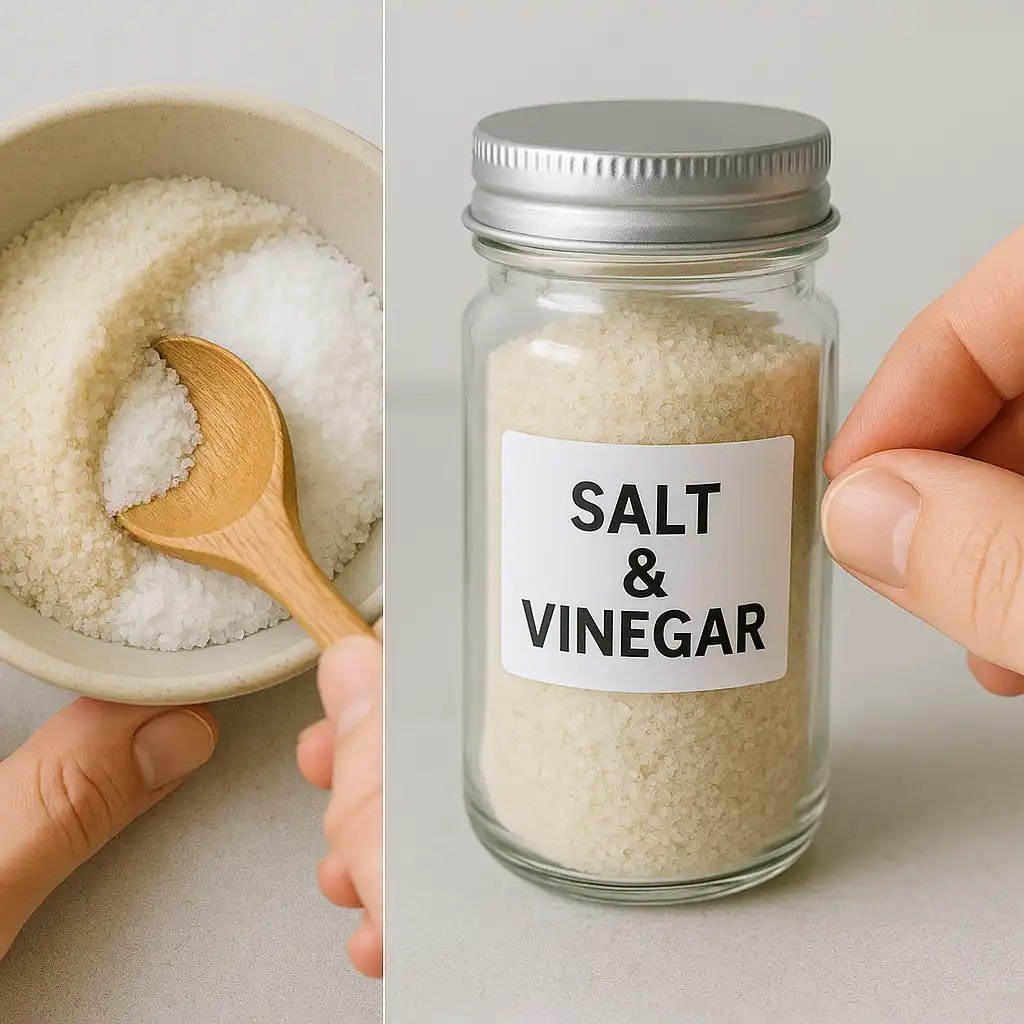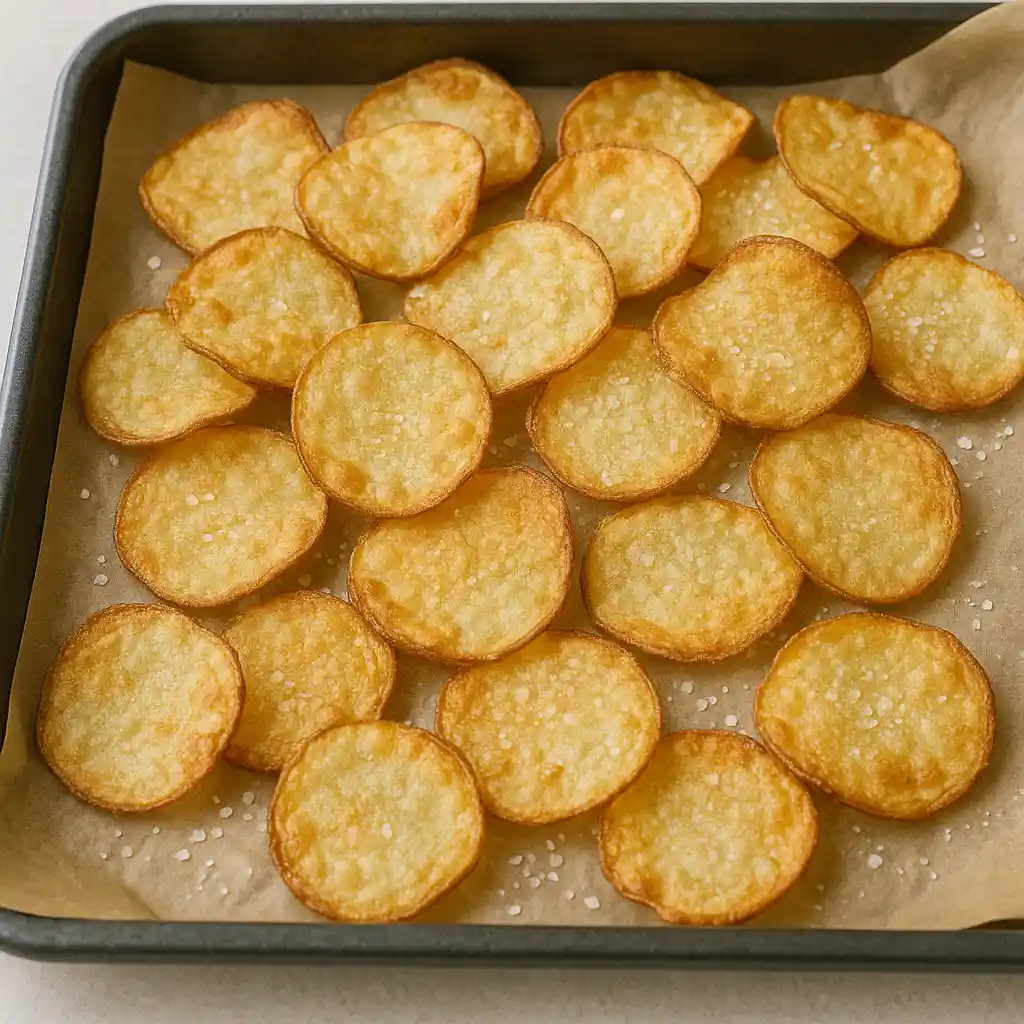If you’ve ever crunched into a tangy, salty crisp and thought, “How do they get that flavor just right?” — you’re not alone. In this article, we’re diving into how to make salt and vinegar seasoning using everyday pantry items. Whether you want a bold dry rub for snacks, a zingy sprinkle for popcorn, or the perfect vinegar salt recipe, I’ll walk you through it all. We’ll look at how this punchy flavor works, how to balance the acidity and saltiness, and ways to tweak it for your taste buds.
The Story & Intro – Why We Love This Zesty Classic
Bringing Back That Tangy Snack Memory
The first time I made salt and vinegar seasoning from scratch, I was trying to recreate the exact flavor of my childhood favorite chips. I remember sitting on my grandma’s porch on summer afternoons, a paper bag full of salt and vinegar crisps in hand, licking my fingers between every bite. That tangy, tongue-tingling punch was addictive. Years later, when my kids asked why our popcorn didn’t taste like “those crunchy chips from the store,” I knew it was time to figure out the secret.
After testing a dozen combinations in my kitchen, I finally nailed a vinegar spice blend that made my whole family pause and say, “Wow, that’s it!” That’s when I knew I had to share this salt vinegar seasoning recipe with other home cooks.
What Makes a Good Vinegar Salt Recipe Work?
To truly understand how to make salt and vinegar seasoning that hits the mark, you’ve got to know what you’re aiming for. At its core, the flavor is all about balance — salty, acidic, and a little sharp. But not all vinegar salt recipes are the same. Some lean on malt vinegar powder for a bold kick, while others prefer a more subtle apple cider vinegar note.
The trick lies in using a dry vinegar powder (yes, it exists!) that delivers the tang without making your mix clumpy. Then you match it with the right kind of salt — flaky sea salt, fine salt, or even Himalayan — depending on how it’ll be used. For snacks like chips or roasted chickpeas, a fine grind helps it cling better. For a dry rub or popcorn, coarse salt holds up beautifully.
Naturally Working
If you’re searching for how to make salt and vinegar seasoning at home, you’re probably craving that sharp tang — without the additives. The good news is, this homemade version gives you total control over what goes in. You won’t need any weird preservatives or lab-made additives — just everyday salt, vinegar in powdered form, and flavor you can trust. Whether you’re prepping a snack board, seasoning chicken wings, or whipping up a creative popcorn night, you’ll love this homemade salt and vinegar seasoning.

Homemade Salt and Vinegar Seasoning
Ingredients
- 4 tablespoons fine sea salt
- 2 tablespoons vinegar powder malt vinegar powder for classic chip flavor
- ½ teaspoon citric acid optional, for extra tang
- ¼ teaspoon garlic powder optional, for dry rub variation
- ¼ teaspoon onion powder optional, for dry rub variation
Instructions
- In a small bowl, whisk together the fine sea salt and vinegar powder until fully blended.
- Stir in citric acid, if using, and taste to adjust the tanginess to your preference.
- For a dry rub version, mix in garlic powder and onion powder.
- Transfer the mixture to a spice jar or shaker bottle.
- Label and store in a cool, dark place for up to 3 months. Shake before each use.
Notes
How to Make Salt and Vinegar Spice from Scratch
Choosing the Right Ingredients for Your Vinegar Salt Recipe
Before you mix anything, the real secret to a good salt and vinegar seasoning recipe lies in the quality of your ingredients. Here’s what you’ll need:
- Vinegar powder: It’s the key ingredient that gives your mix its sharp, crave-worthy kick — skip it, and you miss the magic. You can find it online or at specialty spice shops labeled as malt vinegar powder, white vinegar powder, or even apple cider vinegar powder. Malt vinegar powder gives the most classic chip flavor.
- Salt: Fine sea salt or popcorn salt works best because it coats surfaces more evenly. For rubs or grilled meats, a coarser salt like kosher can add texture.
- Citric acid (optional): This boosts tartness and adds that sharp edge, especially if your vinegar powder is mild.
- Optional flavor boosters: Some home cooks like adding garlic powder, onion powder, or smoked paprika for a twist.
Here’s a simple vinegar seasoning base ratio:
| Ingredient | Amount |
|---|---|
| Vinegar powder | 2 tablespoons |
| Fine sea salt | 4 tablespoons |
| Citric acid (optional) | 1/2 teaspoon |

This mix creates a punchy salt and vinegar dry rub that works beautifully on roasted potatoes, fries, nuts, and even popcorn. You can double or triple the batch and store it in an airtight jar in a cool, dark spot.
Step-by-Step: How to Make Salt and Vinegar Seasoning
Making this seasoning is as simple as combining dry ingredients. But here’s how to make it right:
- In a small bowl, whisk together your salt and vinegar powder until well blended.
- If adding citric acid, stir it in gently and taste to adjust the tartness.
- Pour the mixture into a spice jar or shaker bottle.
- Label and store for up to 3 months.
If you’re planning to use this as a salt and vinegar rub for meats or fish, try adding a pinch of ground black pepper and a bit of garlic powder. For a lighter touch on snacks, keep it basic — just salt and vinegar powder.

Tips for the Perfect Salt Vinegar Seasoning Recipe Every Time
- Give it a quick shake before using, since the vinegar powder can sink to the bottom over time.
- Try flavored salts: Smoked sea salt adds a deep twist to the classic vinegar spice flavor.
- Sprinkle while hot: Seasoning sticks better to hot foods like fries or popcorn straight out of the oven or air fryer.
You’ve now got your very own homemade salt and vinegar seasoning — no store trip needed.
How to Make Your Own Salt and Vinegar Crisps
How to Make Your Own Salt and Vinegar Crisps
If you’re a fan of that addictive tangy crunch, you’ll love making your own salt and vinegar crisps at home. It’s simple, budget-friendly, and far more flavorful than any bag you’ll find on a shelf — especially with your homemade vinegar spice.
Here’s my go-to method:
- Thinly slice 2–3 medium potatoes using a mandoline or sharp knife.
- Let the slices sit in a bowl of cold water for half an hour — this helps rinse off the starch and gives a crispier finish.
- Dry thoroughly and toss with just enough oil to coat.
- Bake at 400°F (200°C) for 18–22 minutes, flipping once.
- Sprinkle your salt vinegar seasoning generously over them while still hot.

These come out crispy, zesty, and ridiculously good. You can apply the same technique to sweet potato chips, beetroot, or even zucchini slices. One of my favorite pairings is with our spicy crispy baked chicken thighs — it’s the perfect mix of heat and acidity. Or for a lighter bite, serve your crisps alongside a batch of high-protein biscuits for a satisfying snack plate.
Turn It into a Salt and Vinegar Dry Rub
Your homemade vinegar spice isn’t just for snacks — it makes an incredible salt and vinegar dry rub too. The sharp tang balances out rich meats and makes grilled dishes really stand out.
Try this mix on:
- Chicken wings before roasting or air frying
- Pork chops or ribs before grilling
- Tofu cubes for a tangy vegetarian twist
- It even works on corn: brush with warm butter first, then shake on the seasoning for a tangy twist.
To boost the flavor even more, blend in a pinch of garlic powder or onion flakes. It’s a simple trick to turn plain ingredients into something seriously tasty and exciting.
You can also find us on Facebook & Pinterest!
FAQs About Salt and Vinegar Seasoning
How do I make my own salt and vinegar seasoning?
Start with vinegar powder and fine salt as your base. Mix 2 tablespoons of vinegar powder with 4 tablespoons of fine sea salt. For extra tang, add a small amount of citric acid. Store the blend in a sealed jar and give it a shake before each use.
What is salt and vinegar made of?
It’s made from a combination of dried vinegar (in powder form) and salt. The vinegar can be malt, apple cider, or white — depending on the flavor you want. Some recipes add citric acid for sourness or garlic powder for depth.
How do you make salt and vinegar solution?
If you want a liquid version, simply combine 1/2 cup of vinegar (any kind) with 1 tablespoon of salt. Stir until fully dissolved. This works well for marinades or soaking vegetables before roasting.
How to make your own salt and vinegar crisps?
Slice potatoes thinly, soak in cold water, dry them, and bake until crispy. Sprinkle your homemade salt and vinegar seasoning on top while still warm. You can also use the mix on roasted chickpeas, popcorn, or even homemade pita chips.
Conclusion
Making your own salt and vinegar seasoning is simple, fun, and far more satisfying than relying on store-bought options. Whether you’re using it as a dry rub, crisp topping, or popcorn flavor, the results are always sharp, savory, and full of personality — just like the best home-cooked dishes.
In my kitchen, this blend has become a go-to for snack nights, quick lunches, and flavor-packed dinners. It’s one of those little recipes that feels like a secret — easy to make, endlessly useful, and absolutely worth keeping in your spice cabinet.






2 thoughts on “How to Make Salt and Vinegar Seasoning at Home (That Actually Tastes Amazing)”